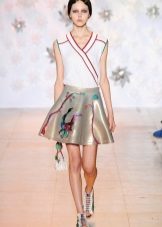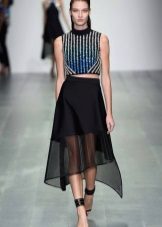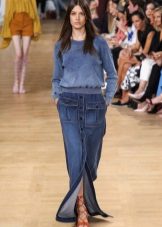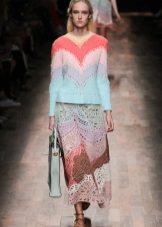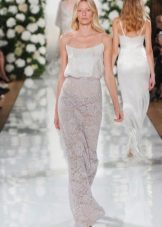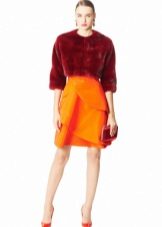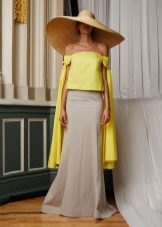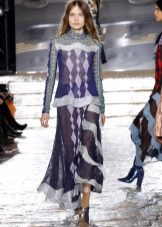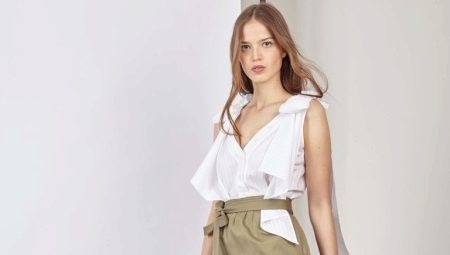When planning to sew a skirt with your own hands, you first need to decide what material will be sewn. The selection of suitable tissue is based on many factors. Among them are the style of the product, and the nuances of the cut, and the purpose of the skirt, and the desired color, and the type of figure.
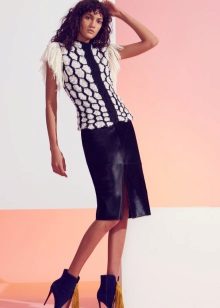

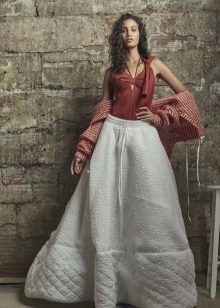
The choice of fabric based on the style
Sun and half sun
For the skirts of this style, different materials are selected depending on the length of the product. Batiste, chiffon, delicate types of knitwear and wool are especially popular.


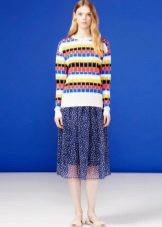

A silk skirt looks attractive.
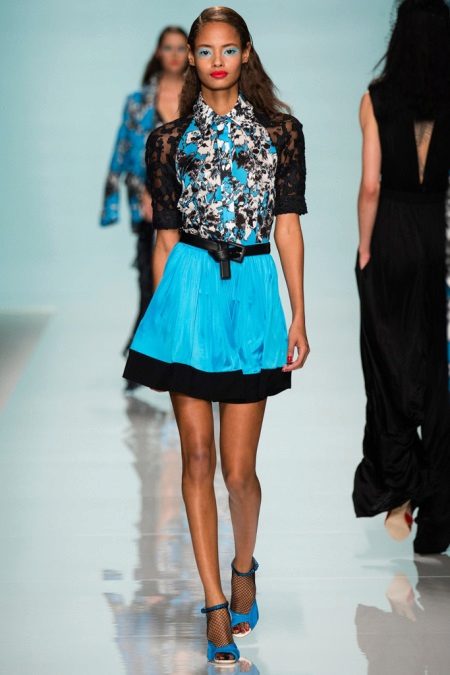
Skirts of such a cut from translucent materials look good, especially if they are sewn with multilayer ones.


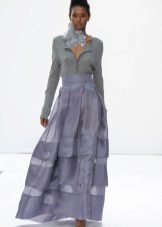
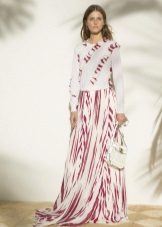
Pencil
For skirts of this type, a dense material that does not lose shape is selected, which should not be very soft and not too thin.
A good option is costume fabric, which can be natural (it wrinkles heavily and can sit down) or mixed (such fabric is easier to care for).
Also, pencil skirts are sewn from thick knitwear, thick silk, tweed, linen, velveteen, cotton.
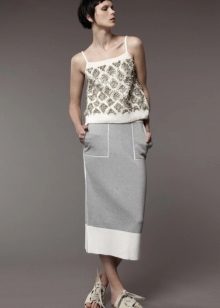

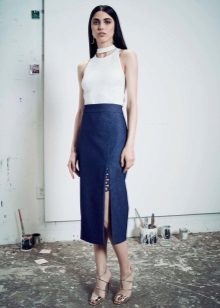
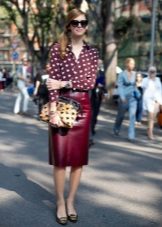
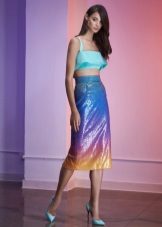
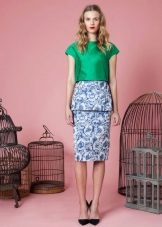
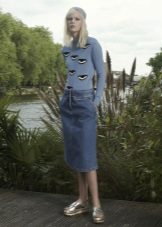
Tulip
This style requires the use of a fabric that will drape well and form soft folds. It is important that the fabric flows and does not puff.

A frequent choice is satin, silk, cotton material with the addition of stretch, viscose, wool mixture.
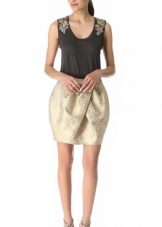

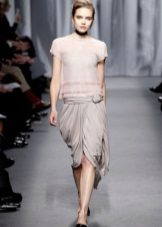

With shuttlecocks
The fabric is selected taking into account that the shuttlecock was represented by a beautiful smooth line, and not sticking out to the sides. Most often, models with this finish are sewn from chiffon, cotton and various dress materials.
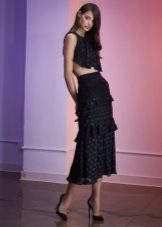
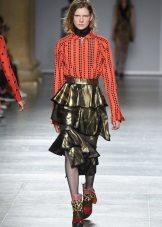
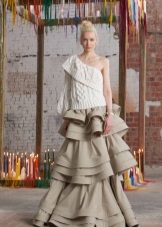
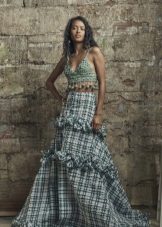
Pleated
For such skirts with ironed pleats, you should purchase a fairly dense material that can hold its shape.It should not be bulky or loose. Most often prefer synthetics or mixed fabrics.
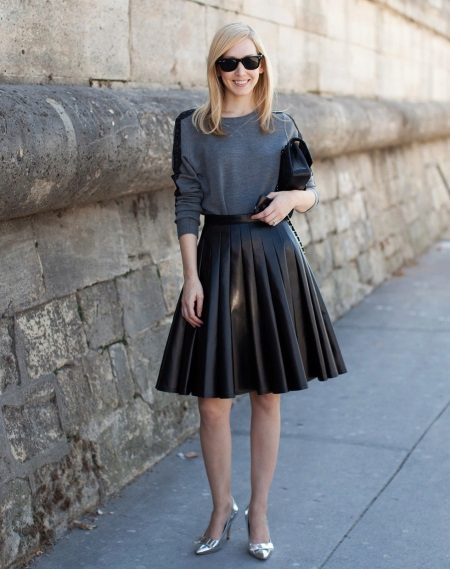
If the pleated skirt is summer, the material is selected moving and light. For the winter version, pay attention to the dress and costume fabric, as well as the wool.


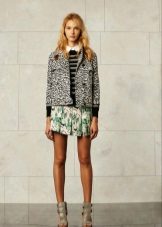

Balloon
For such a skirt, you need to purchase a non-flowing and non-hanging fabric. The material must keep its shape so that the product has the desired volume.

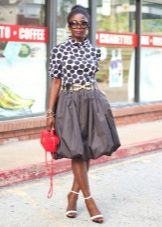
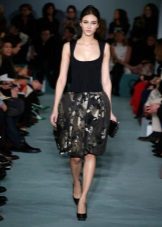
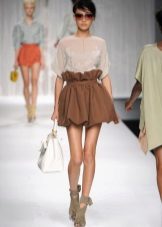
With pockets
The best option for such models would be dense fabrics such as jeans, satin, linen or velveteen. Such materials may be natural or with the addition of elastane.
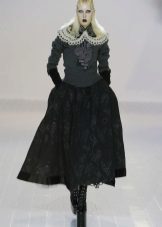
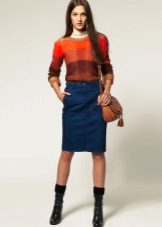

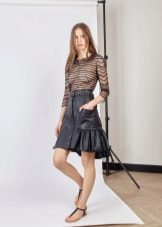
Narrow
The most important fabric criteria for such a skirt will be softness and elasticity. The fabric should not wrinkle and go to bed with creases.
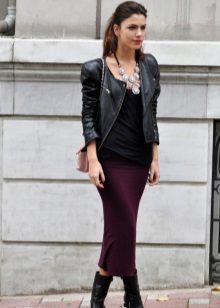

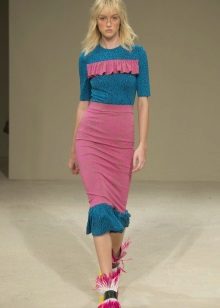
The best choice is medium-density knitwear. Often choose soft lace.

Trapezoid
Such a skirt is sewn from materials holding the shape. A good choice would be a cambric, velvet, chintz, denim, jacquard, medium density knit fabric.
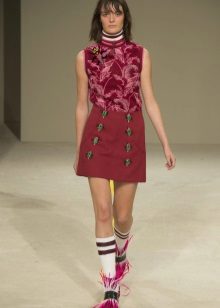
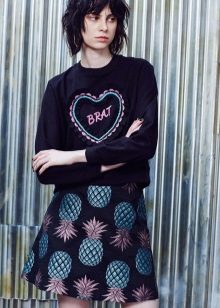
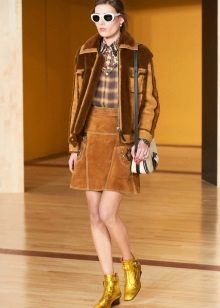
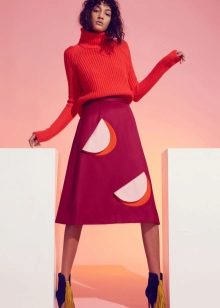
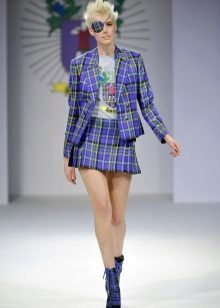
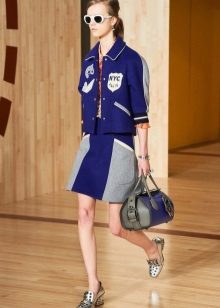
Year
Skirts of this style are sewn from loose materials. Silk and viscose, as well as thin cotton, are good. Denim or jacquard will also be a good choice for a year.

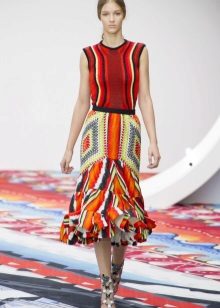
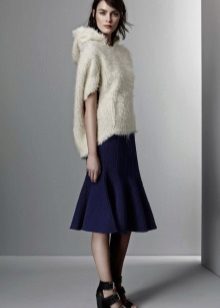
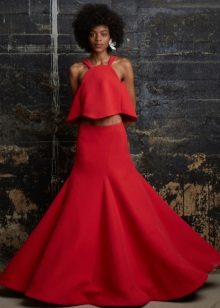
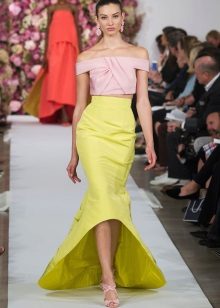
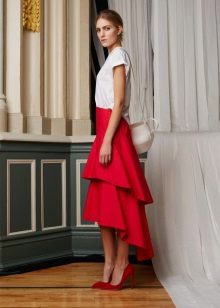
Pack
Such skirts are traditionally made from airy and translucent fabrics. The most popular are tulle, mesh and chiffon.
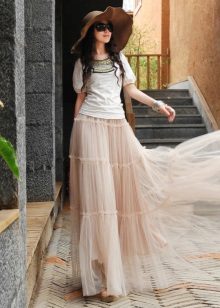
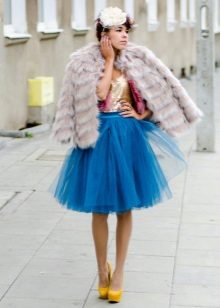
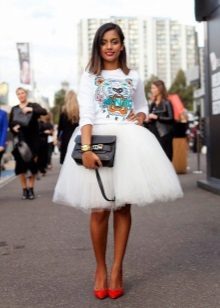
Popular fabric types by density and thickness
When choosing a fabric for a skirt, you can see many different characteristics on its label. Among them, the surface density of the material can be noted. Such a parameter will tell you how durable the fabric is - the higher the value, the longer the skirt from this material will last.
The label may also indicate the thickness of the fabric. This characteristic is affected by the density of the yarn, the type of weaving of the fibers, the finish of the fabric and other nuances. The thicker the fabric, the higher will be its strength, thermal protection and wear resistance.
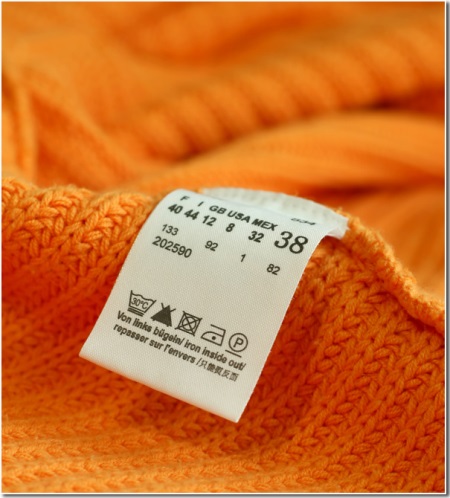
From thicker materials sew winter and demi-season models of skirts. These include dense wool, velveteen, dense knitwear. For summer skirts, less thick fabrics are used, for example, chiffon, cambric, crepe de chine, thin linen.
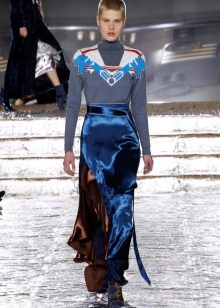
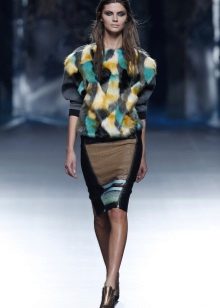
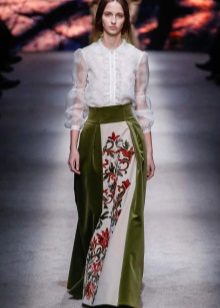
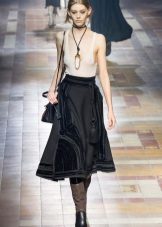
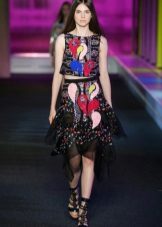
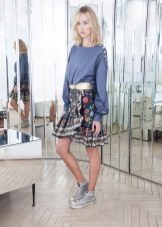

How much fabric is needed for a skirt: calculation technique
Usually, for sewing skirts, a piece of material of standard width (150 cm) is acquired with a length that corresponds to the desired length of the skirt plus a few centimeters of margin for bending. For example, for a straight skirt, take it one length plus 10 cm, which is enough for seams, hem and bottom belt.
For a more accurate calculation of the required amount of fabric, you should take into account your height, completeness and other factors that increase tissue consumption, for example, the presence of patch pockets or frills in the model. If the width of the material is less than the standard, the consumption will also increase.
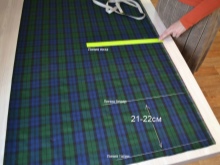
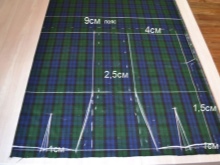
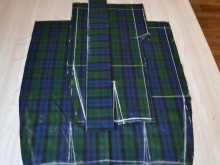
Most of the fabric is required for skirts "sun", as well as models with many layers or folds. Sometimes you have to buy material up to five meters long. To calculate the exact consumption, it is best to build a pattern on paper and lay it out taking into account the cutting of the material.
So you will clearly see how much fabric you will need to create a particular skirt model.
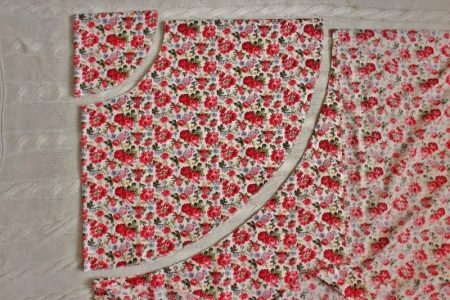
Tips for Beginners
- If you do not have experience in the independent manufacture of a skirt, you should not choose fabric with a complex pattern or checkered print.
- Beginners should not work with chiffon, leather, jacquard, velvet or satin. Jeans, viscose, knitwear, silk, linen, gabardine and thick cotton are considered more suitable fabrics for the first skirts with their own hands.
- If you plan to sew a long skirt, do not buy too tight material for it. A good choice would be wool, linen, silk or denim.
- Too dense fabrics are also not recommended for sewing a skirt, which will become part of the evening outfit. The best options for materials for elegant skirts are called satin, guipure, silk, velvet, lace.
